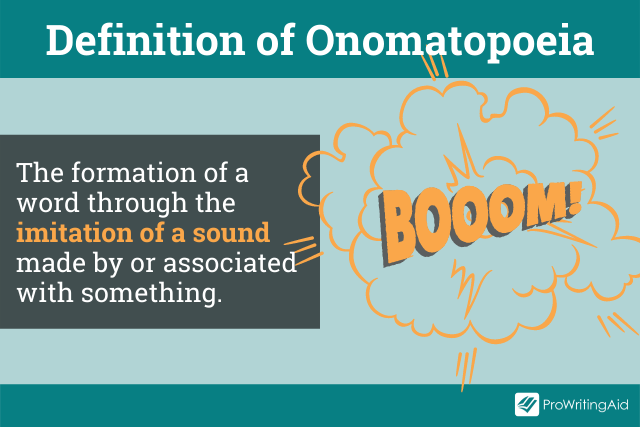Onomatopoeia is a linguistic term derived from the Greek words onoma (name) and poiein (to make), meaning 'the making of a name or word'. It refers to words that phonetically imitate or suggest the sound they describe. Common examples in English include 'buzz', 'clang', and 'sizzle'.
Types of Onomatopoeia
Onomatopoeic words can be categorized based on the sounds they represent:
- –
Animal Sounds: Words that mimic the sounds made by animals. For instance, in English, a dog's bark is represented as 'woof', while in Japanese, it is 'wan wan'.
- –
Natural Sounds: Words that imitate sounds from nature, such as 'splash' for water or 'boom' for thunder.
- –
Mechanical Sounds: Words that replicate sounds made by machines or tools, like 'beep' for a car horn or 'click' for a camera shutter.
Onomatopoeia Across Languages
Onomatopoeic expressions vary significantly across languages due to differences in phonetic and cultural perceptions. For example:
- –
Dog's Bark:
- –English: 'woof'
- –French: 'ouaf ouaf'
- –Japanese: 'wan wan'
- –Spanish: 'guau guau'
- –
Clock Ticking:
- –English: 'tick tock'
- –Italian: 'ticchettio'
- –Japanese: 'kachi kachi'
These variations highlight how different linguistic communities interpret and represent sounds. (babbel.com)
Onomatopoeia in Japanese
The Japanese language is notable for its extensive use of onomatopoeia, encompassing not only sounds but also states and motions. Japanese onomatopoeia is categorized into:
- –
Giseigo: Imitates sounds made by living things, such as 'wan wan' for a dog's bark.
- –
Giongo: Represents sounds made by inanimate objects, like 'zaa zaa' for heavy rainfall.
- –
Gitaigo: Describes states or conditions, such as 'pika pika' for something shiny.
- –
Giyougo: Depicts movements or actions, like 'suru suru' for a smooth sliding motion. (
en.wikipedia.org)
Onomatopoeia in Literature and Media
Writers and poets frequently employ onomatopoeia to create vivid imagery and engage readers' auditory senses. For example, Edgar Allan Poe's poem 'The Bells' uses words like 'tinkle', 'clang', and 'clangor' to mimic the sounds of different types of bells. In comics and graphic novels, onomatopoeic words such as 'bam', 'pow', and 'wham' are used to represent actions and sounds visually.
Cultural Significance
Onomatopoeia plays a crucial role in language acquisition and development, as it often forms part of early vocabulary in children. Additionally, it reflects cultural perceptions of sounds and their significance, influencing how different societies interpret and describe their auditory environment.
Challenges in Translation
Translating onomatopoeic words poses challenges due to the lack of direct equivalents across languages. Translators must consider the phonetic and cultural context to convey the intended sound and meaning accurately. For instance, the English 'cock-a-doodle-doo' for a rooster's crow is 'kikeriki' in German and 'kokekokko' in Japanese. (pangea.global)
